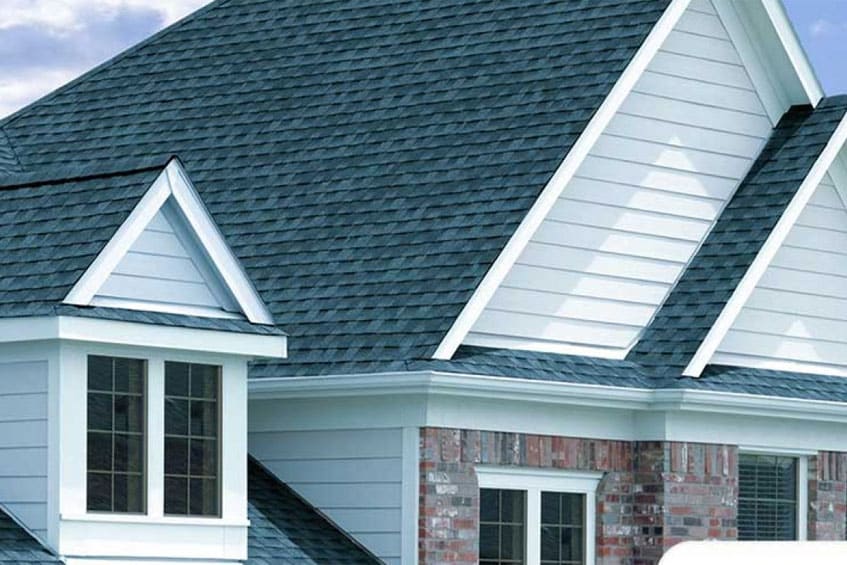Is it time to repair or replace your old roof? Maybe you’ve noticed signs of wear and tear on your roof getting worse, or a violent storm came through your area recently and did some damage to local roofs. In many cases, there are visible clues that you need a new roof, but sometimes roof damage can sneak up on you with very little warning. If you suspect that your roof is damaged it’s important to take action and call a roofer. Here are 5 red flags that you should pay attention to:
Visible Leaks
One of the most common signs that you need a roof replacement is an obvious leak. Roof leaks occur for many reasons, ranging from worn out materials to storm damage. As roofing materials weaken, water is able to seep in through the shingles and into the rest of the house. This leads to water intrusion, and often, visible puddles during rain storms. Sometimes small leaks can be patched or repaired by a roofing contractor, but in many cases, small leaks go undetected until they are much larger and require a bigger fix.
If you have a large, persistent roof leak, or there are multiple leaks throughout the roof, it’s time to consider replacing your roof. The best way to find out the extent of the damage is to have it inspected by a professional roofing company.
Interior Water Damage
A visible drip isn’t the only sign of a roof leak. Many times a leaky roof will manifest in the form of interior water damage. This often looks like streaks, stains, or water spots in the attic, or the ceiling or walls of your home. Water damage can be caused by other issues, like a burst pipe, leaking appliance, or faulty faucet, but if it’s showing up in the attic, on the ceiling, or near the tops of your walls, it is likely caused by a leaky roof.
In this case, the best course of action is to hire a professional roofing contractor to check your roof and determine if it’s the source of the leak. If a roof leak is present, they will determine the extent of the damage and the best solution. In many cases it will be a new roof.
Curling, Missing, or Mossy Shingles
In some cases, roof damage is obvious from the ground. Shingles are the gateway to your roofing system, so if you notice missing, curling, or cracked shingles when you look at your roof, it’s probably time for a roof replacement.
Some of the most common forms of visible shingle damage include:
- Cracked shingles
- Damaged or curled shingles
- Loose or missing shingles
- Damage or discoloration around vents
- Missing granules
- Moss or algae growth
- Damage around chimneys or skylights
It’s also a good idea to check your gutters for shingle debris. Debris in the gutters can indicate that the shingles are reaching the end of their lifespan and beginning to disintegrate.
If you see any signs of damage on your roof, it’s a good indication that it’s time for a roof replacement. Schedule an inspection with a roofing professional to help you determine the extent of the damage, and the best way to fix it.
A Sagging Roofline
Another way to know that you need a new roof is to look at the shape of your roofline. Your roof lines should be straight and strong. If you notice dipping, curving, or visible sagging it’s important to investigate the cause. While a sagging roofline could be caused by a framing issue, it can also be caused by a water-saturated roof deck. If this is the case, you may need a new roof to fix the problem.
If a sagging roofline is accompanied by visible shingle damage, leaks, or water damage, it’s important to act quickly to fix the problem before it gets worse. In some cases, a sagging roofline can lead to a partial or complete cave in.
Storm Damage
Storm damage is one of the leading causes of roof replacements. This is because heavy rainstorms, ice storms, hail storms, hurricanes and tornadoes can wreak havoc on roofs, no matter what condition they are in before the storm.
is a particular threat to homes in areas prone to tornadoes or hurricanes. High speed wind can rip shingles completely off of a roof, or lift them, and cause them to crack. This opens up the roof to leaks, and UV damage. If the windstorms are followed by rain or snow, moisture can quickly seep into the roofing system and lead to water damage. Debris carried by the wind can also blow into your roof and puncture the shingles.
Whether your roof is aging, you can see signs of damage, or the roof recently sustained a heavy storm, it’s important to act fast when you suspect a problem! In many cases, roof damage can be repaired if it’s caught early, but if left alone, it can progress quickly. Scheduling an inspection with a residential roofing company is the best way to determine if a repair will be enough to fix the damage, or if you need a new roof. These inspections are usually free, and don’t require a commitment.





